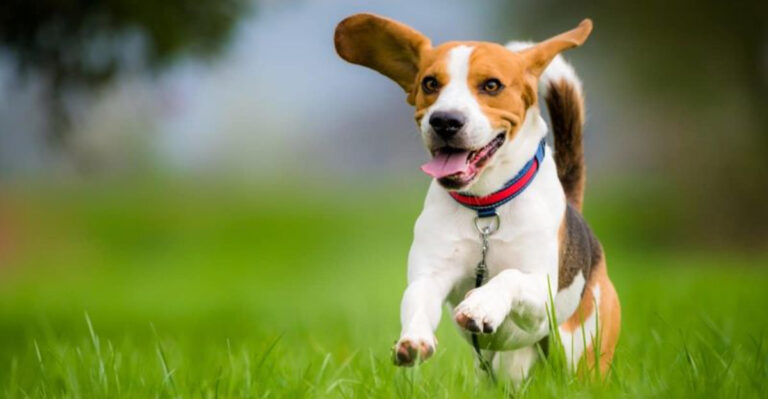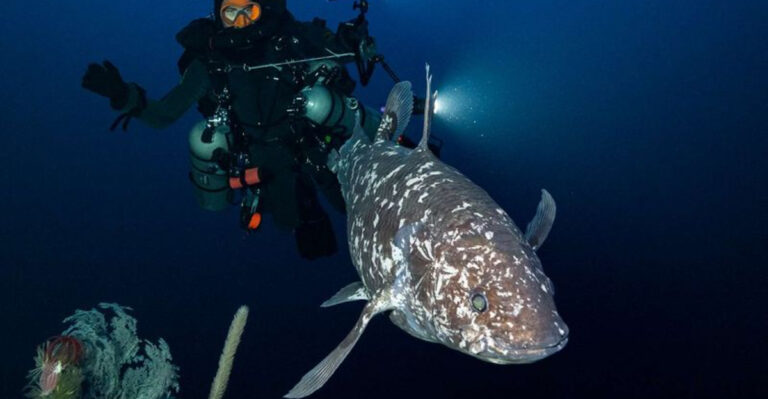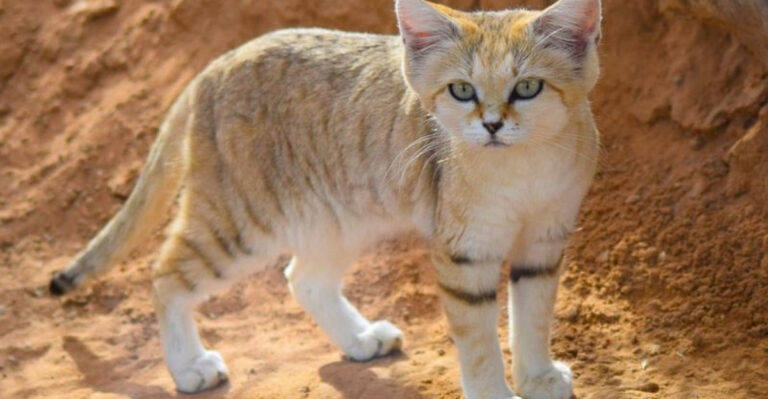13 Surprising Foods White-Tailed Deer Will Eat In A Pinch
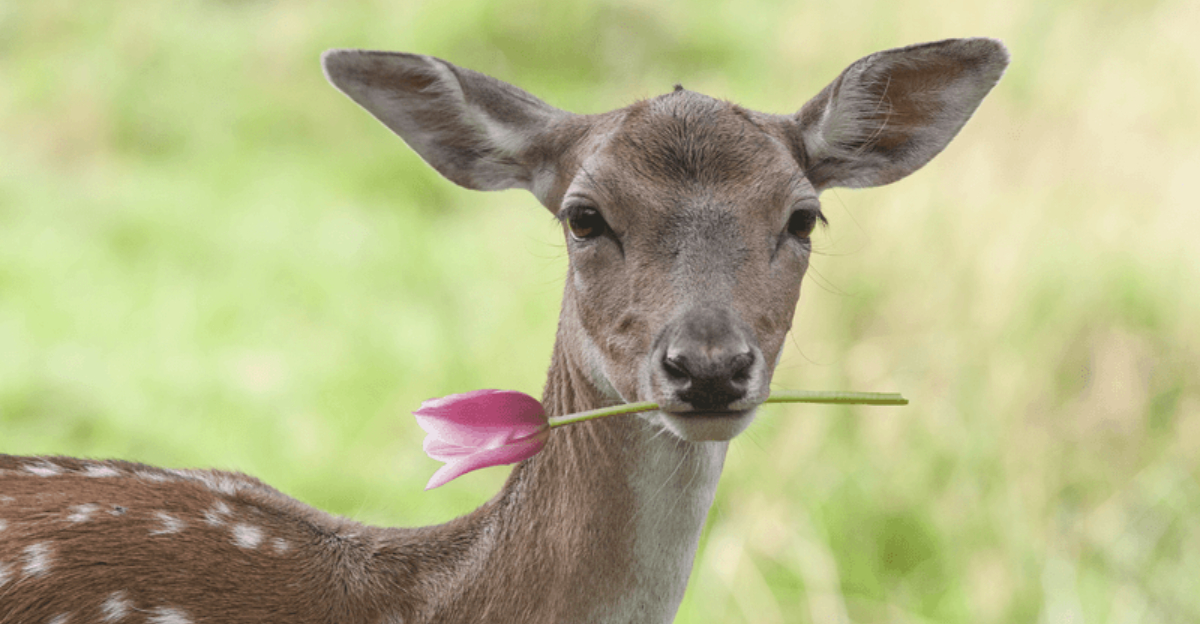
White-tailed deer are known for munching on tender leaves, twigs, and garden vegetables, but when food gets scarce, these adaptable creatures become surprisingly creative eaters.
During harsh winters or periods of drought, deer will venture beyond their typical menu to survive. You might be shocked to discover what these graceful animals will consume when their favorite foods aren’t available!
1. Bird Seed From Feeders
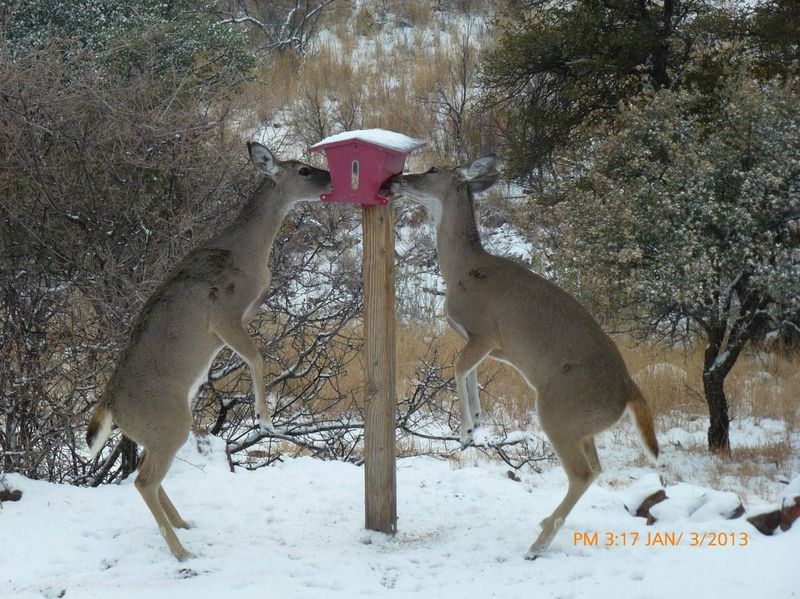
Deer have a knack for raiding bird feeders when winter hits hard. They’ll stand on their hind legs, stretching their necks to reach the seed-filled trays meant for cardinals and chickadees.
Homeowners often spot these unexpected visitors in the early morning, helping themselves to sunflower seeds and millet. The high fat content provides valuable calories during cold spells when natural vegetation is buried under snow.
2. Fallen Fruit
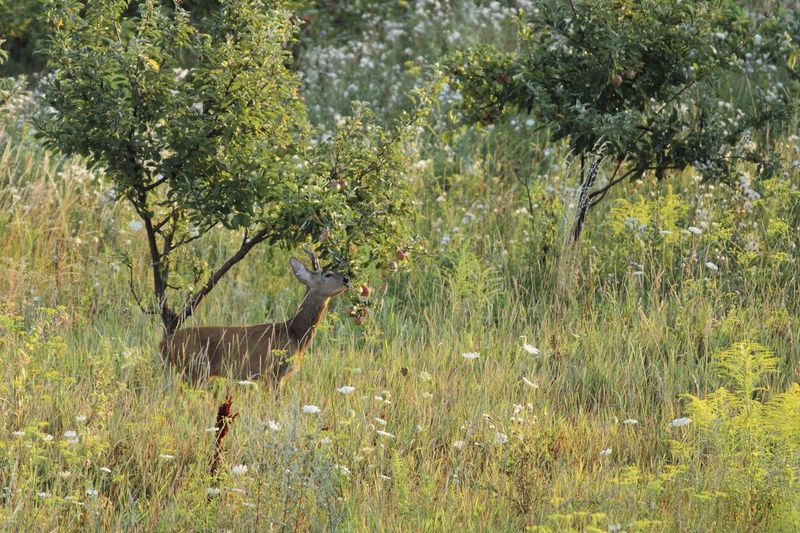
Apples, pears, and other orchard fruits become deer delicacies when they drop to the ground. Unlike their careful browsing of leaves, deer will gorge themselves on sweet windfalls until their bellies bulge.
Orchardists often report finding distinctive hoof prints among picked-clean areas under fruit trees. The natural sugars provide quick energy, while the moisture content helps deer stay hydrated during dry spells when water sources might be limited.
3. Mushrooms And Fungi

Forest floors harbor treasures that deer sniff out with remarkable precision. They’ll consume various mushroom species that humans might avoid, seeming to instinctively know which fungi are safe.
Woodland cameras have captured deer deliberately digging through leaf litter to uncover these hidden delicacies. The protein-rich fungi provide essential nutrients, especially in late summer and fall when other food sources might be depleted from drought or overpopulation.
4. Pumpkins And Squash
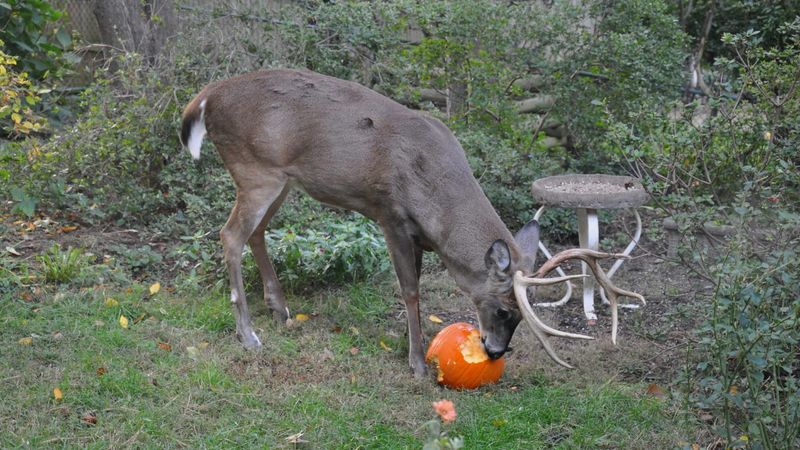
After Halloween, those decorative pumpkins become deer buffets. Their strong teeth easily break through the tough rinds to reach the nutritious flesh and seeds inside.
Farmers with pumpkin patches often install extra fencing during growing season to protect their crops. The combination of natural sugars, fiber, and moisture makes these fall vegetables particularly attractive to deer preparing for winter, when their bodies need to build fat reserves.
5. Landscape Mulch
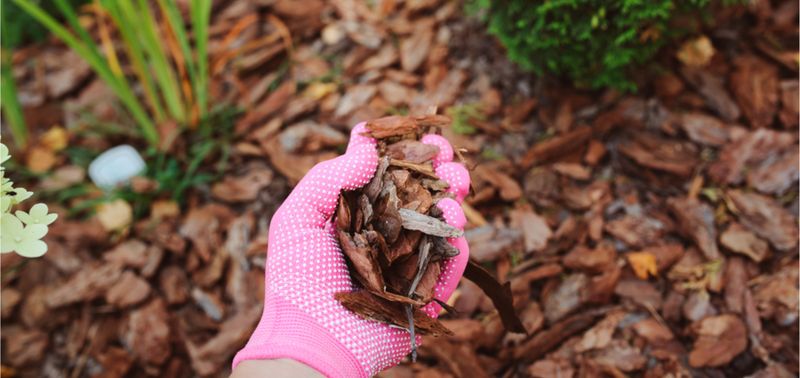
Those cedar chips protecting your garden plants might end up as deer snacks. Hungry deer will nibble on wood mulch, especially varieties made from fruit trees or cedar.
Landscapers in deer-heavy areas often recommend switching to stone mulch or less appetizing varieties. While not nutritionally significant, the behavior shows how desperate deer become during food shortages, using the woody material to fill their stomachs when more nutritious options aren’t available.
6. Acorns And Tree Nuts
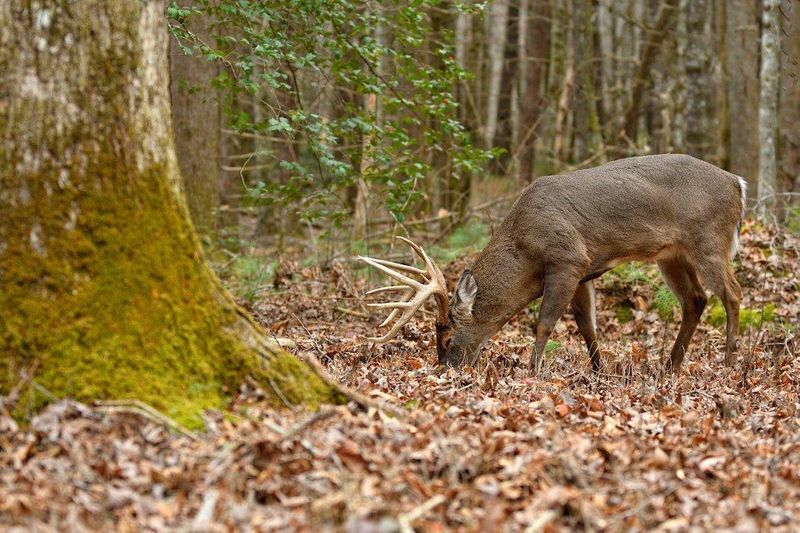
During mast years when oak trees produce bumper crops, deer become acorn vacuum cleaners. They’ll travel miles to find these protein-packed nuggets, often competing with squirrels and wild turkeys.
Forest ecologists track acorn production as it directly affects deer health and movement patterns. A single deer can consume several pounds of acorns daily, converting the starches and fats into the energy reserves needed to survive winter and, for bucks, to grow impressive antlers.
7. Corn And Grain Crops
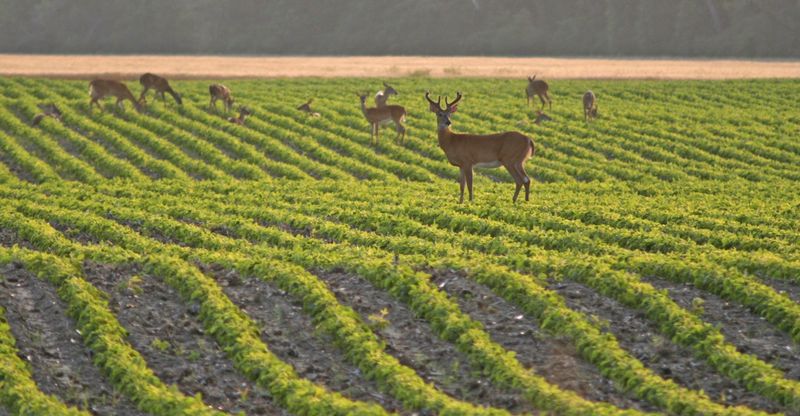
Farmers know all too well how deer love cornfields. These opportunistic browsers slip between rows at dusk, feasting on developing ears and tender stalks.
A single deer can damage dozens of plants in one feeding session. Agricultural experts estimate crop losses in the millions annually due to deer browsing, with corn being particularly vulnerable because its high carbohydrate content provides quick energy that deer crave before winter.
8. Poison Ivy
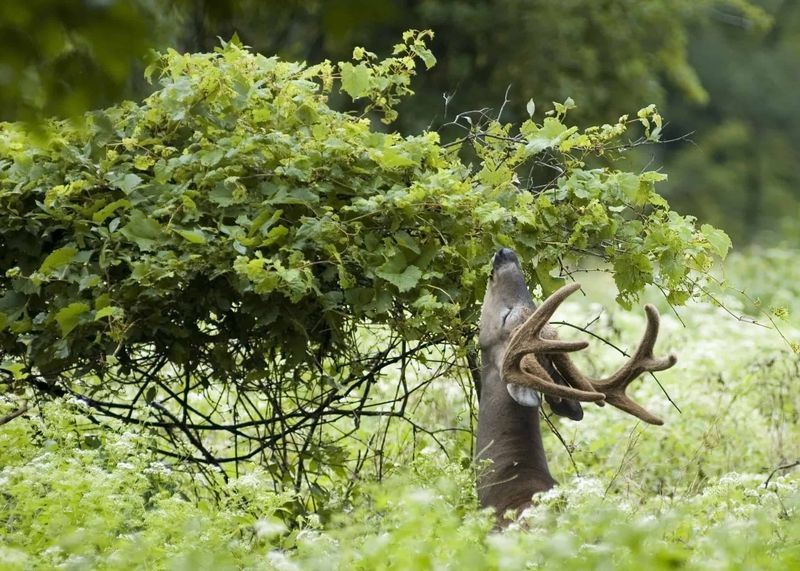
While humans break out in itchy rashes, deer munch poison ivy without consequence. Their digestive systems handle the urushiol oil that causes human misery.
Naturalists observe deer selectively browsing these plants even when other food is available. This surprising menu choice helps control poison ivy spread in woodlands and demonstrates the remarkable adaptations deer have developed to utilize food sources that other animals avoid.
9. Ornamental Flowers
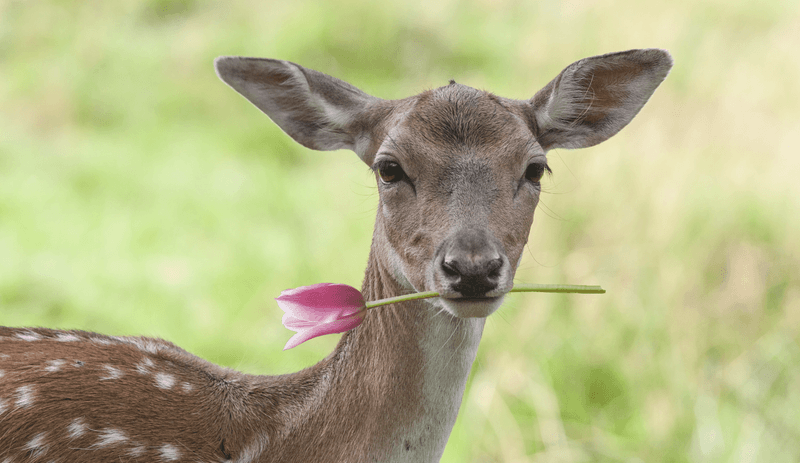
Gardeners lament when deer discover their prized tulips and roses. These animals seem to have a particular fondness for expensive blooms, often ignoring cheaper varieties nearby.
Deer don’t just eat the flowers but will consume entire plants down to the ground. Garden centers now label certain plants as “deer resistant,” though hungry deer might ignore these designations during food shortages, treating your carefully planned garden like an all-you-can-eat buffet.
10. Lichens And Moss
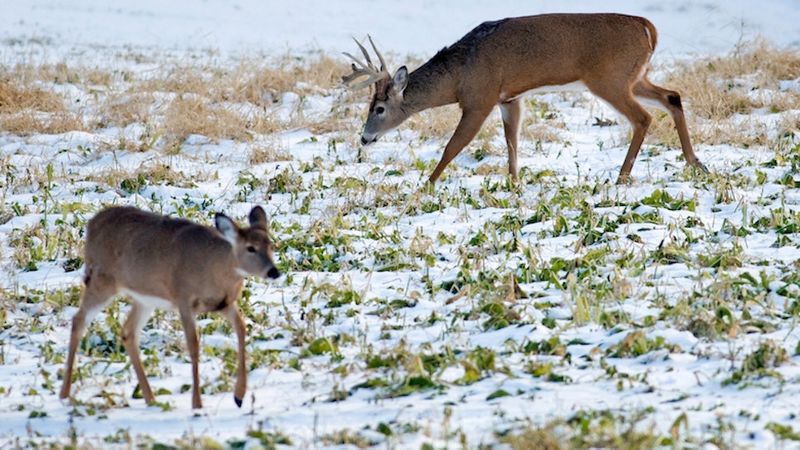
When snow blankets the ground, deer turn to tree-growing lichens. They’ll strip bark to reach these primitive organisms that most animals ignore.
Northern wildlife biologists have documented deer surviving entire winters primarily on lichen diets. These simple plants contain carbohydrates and can be digested by deer’s specialized stomach bacteria, providing minimal but critical nutrition during the harshest months when nothing green remains accessible.
11. Twigs And Tree Bark
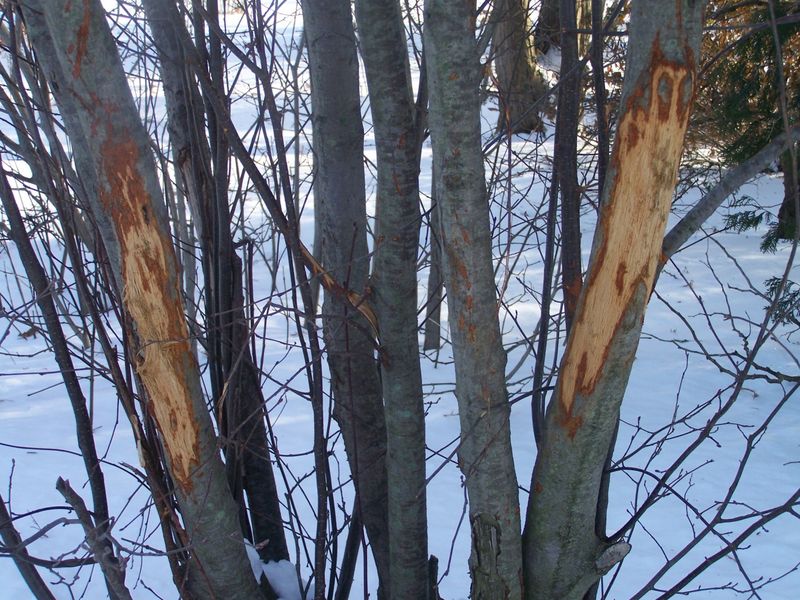
Winter’s scarcity forces deer to become bark eaters. They’ll strip young trees, creating a telltale “browse line” about four feet high in forest areas.
Foresters use protective tubes around seedlings to prevent this damage. Though not ideal food, bark contains cambium layer cells with sugars and starches that provide emergency nutrition. This feeding behavior can severely damage or kill young trees, creating long-term impacts on forest composition.
12. Pet Food Left Outdoors
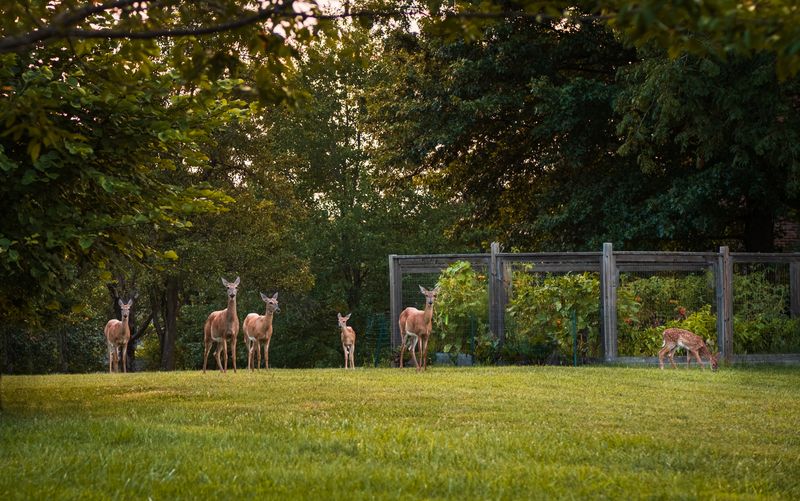
Suburban deer have discovered that dog and cat kibble makes an easy meal. They’ll boldly visit patios and porches where pet owners leave food bowls unattended.
The high protein content attracts them, though it’s not healthy for their specialized digestive systems. Wildlife officials discourage this accidental feeding, as it draws deer into residential areas, increasing vehicle collision risks and potential conflicts with domestic animals and humans.
13. Birch Beer Sap
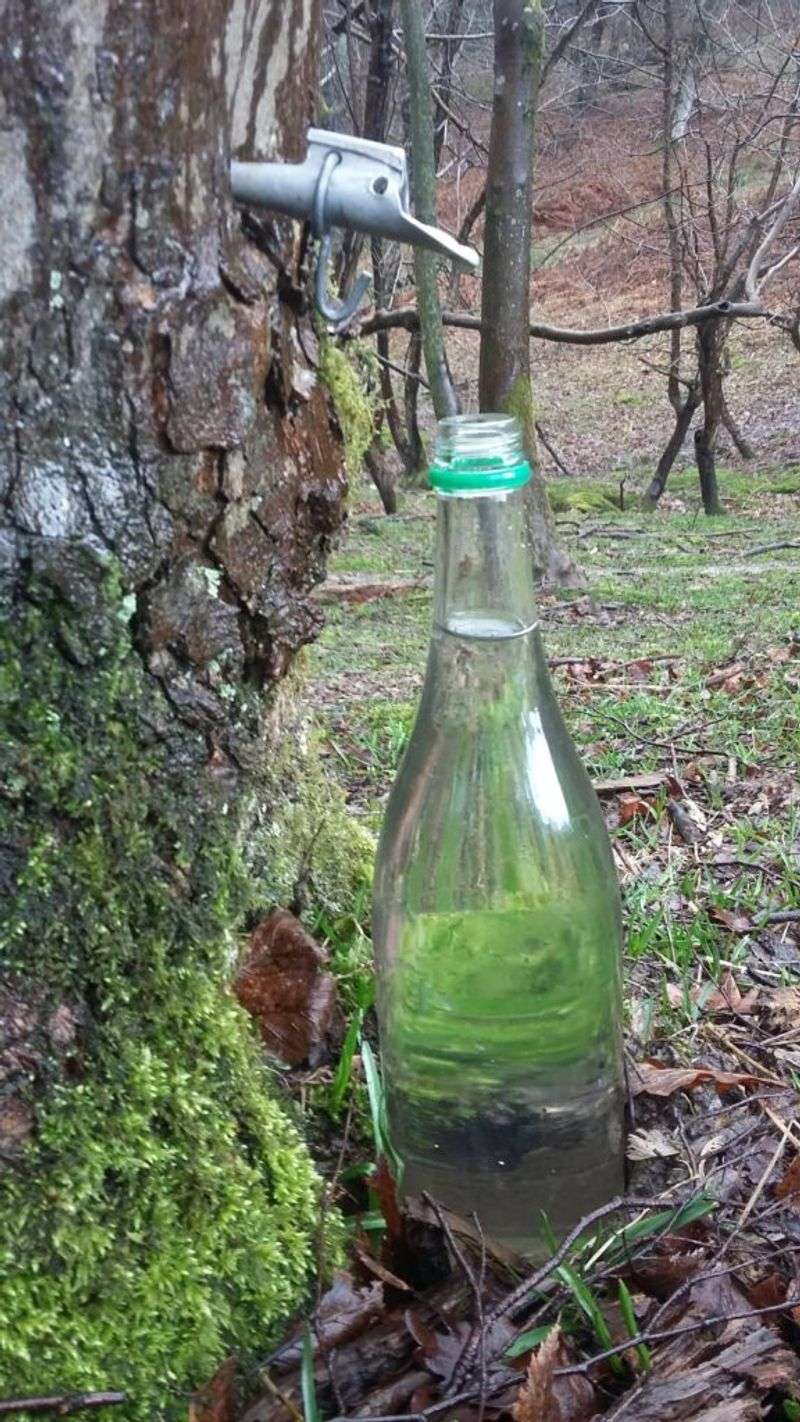
Early spring reveals another surprising deer behavior: sap drinking. They’ll find damaged birch trees and lick the sweet flowing sap before it’s collected for making birch beer.
Native Americans observed this behavior centuries ago, often following deer to locate productive sap trees. The natural sugars provide quick energy after winter’s deprivations, helping deer recover lost weight. This timing coincides with the beginning of antler growth for bucks, requiring additional nutrients.


